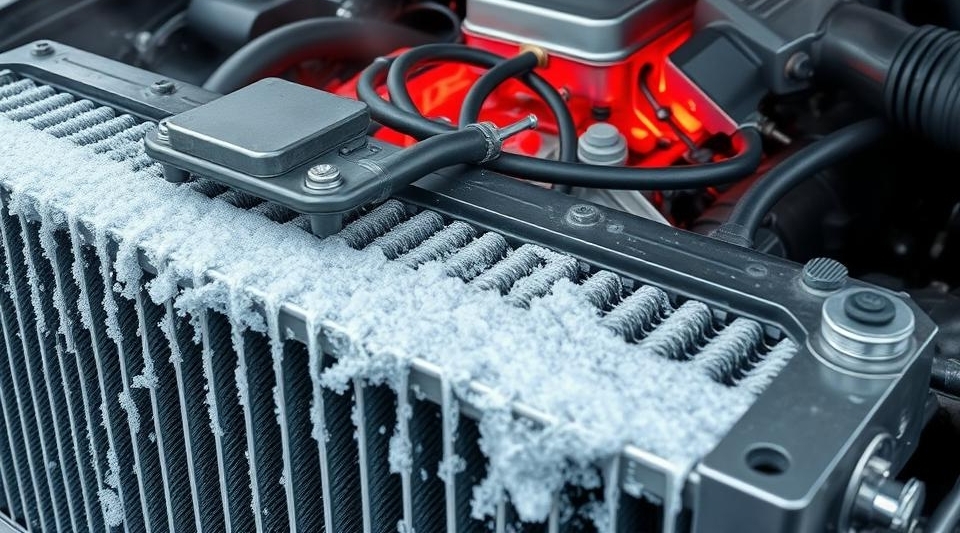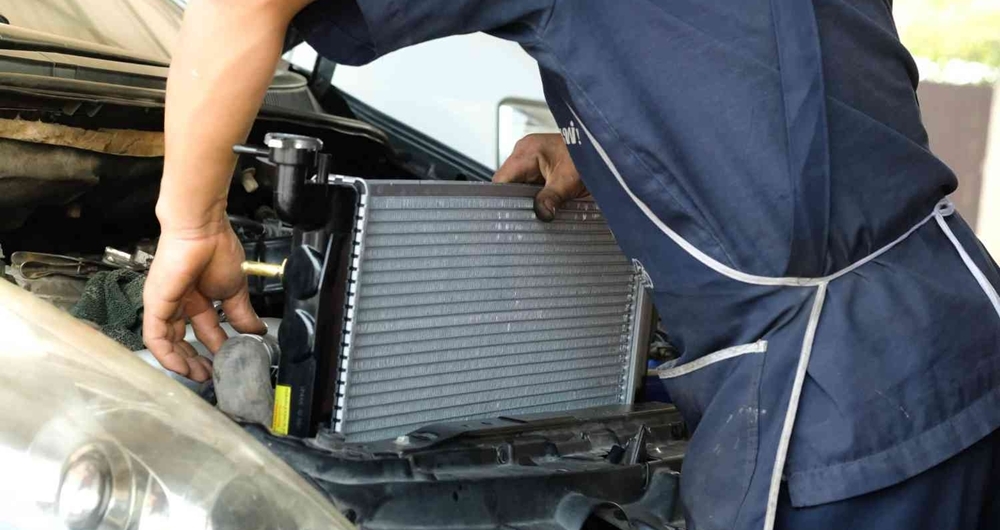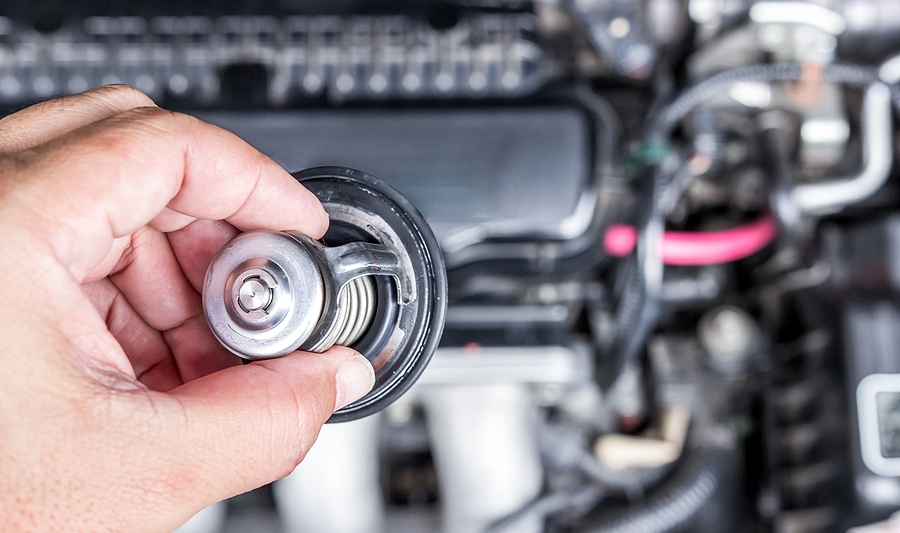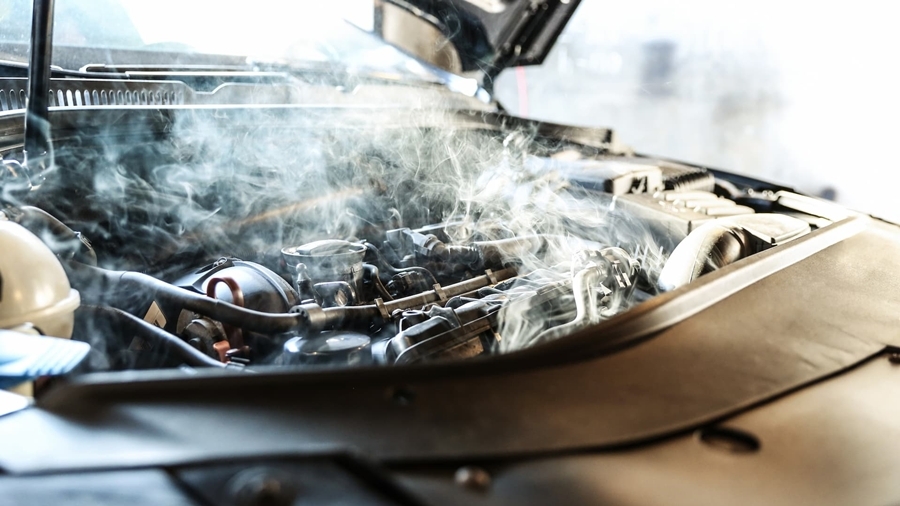Symptoms of a blocked radiator – Is your vehicle suddenly running hot? Are you noticing strange noises coming from under the hood? You might be dealing with a blocked radiator. As someone who’s faced this issue multiple times with my own vehicles, I understand how frustrating and potentially expensive this problem can be if left unaddressed.
A properly functioning radiator is crucial for your vehicle’s cooling system. When blockages occur, they can lead to serious engine damage if not detected and fixed promptly. In this comprehensive guide, I’ll walk you through everything you need to know about identifying and addressing symptoms of a blocked radiator before they turn into major headaches.
Blocked Radiator Symptoms Checklist
This quick-reference tool is perfect for keeping in your glove box or garage—just check off symptoms as they appear to stay ahead of potential radiator issues.
8 Common Symptoms of a Blocked Radiator
Catching the symptoms of a blocked radiator early can save you from major engine damage and expensive repairs. While overheating is the most obvious issue, many signs appear long before the temperature needle redlines. Below is a comprehensive list of warning signs—both obvious and subtle—that may indicate your radiator is clogged or malfunctioning.
- Engine Overheating
The most telling sign. If your temperature gauge climbs faster than usual, especially in traffic or uphill driving, a blocked radiator may be preventing proper coolant flow. - Coolant Discoloration
Your coolant should be bright green, orange, or pink depending on type. Rusty, brown, or sludgy coolant could signal internal blockage caused by rust or contaminants. - Visible Leaks Around the Radiator
Cracks, corrosion at seams, or wet spots around hoses and the radiator core suggest pressure buildup due to poor circulation. - Cold Lower Radiator Hose or Radiator Sections
After warming up the engine, touch different areas of the radiator carefully. Cold spots can indicate areas where coolant isn’t flowing—classic symptoms of a blocked radiator. - Low Cabin Heat
A weak or non-functioning heater could mean hot coolant isn’t reaching the heater core because of restricted flow from a partially blocked radiator. - Fluctuating Temperature Gauge
Sudden up-and-down movements on the gauge can be caused by air pockets or uneven coolant circulation—both linked to internal clogging. - Increased Pressure When Removing Radiator Cap
If you feel unusual pressure or hear a strong hiss (after the engine cools!), it may point to circulation issues or overheating behind the scenes. - White Exhaust Smoke or Rough Idling
Though less common, these could indicate internal engine issues caused by prolonged overheating from a blocked radiator, such as a blown head gasket.
These warning signs often develop gradually. By staying alert and recognizing them early, you can address a blocked radiator before it leads to breakdowns or costly repairs.
Radiator Troubleshooting Flowchart
It guides you through diagnosing and resolving radiator blockage issues step-by-step.
Understanding How Radiator Blockages Occur
Before we dive deeper into the signs of clogged radiator issues, it’s helpful to understand what causes these blockages in the first place. Radiator blockages typically develop from:
- Mineral buildup: Deposits from hard water or low-quality coolant
- Rust and corrosion: Particularly common in older vehicles or those with neglected cooling systems
- Foreign debris: External contaminants that enter the cooling system
- Deteriorated components: Broken gaskets or hoses that release particles into the coolant
- Old coolant: Coolant that has broken down and formed sludge
In my experience, many symptoms of a blocked radiator stem from simple neglect. Regular maintenance goes a long way toward preventing blockages. I’ve made it a habit to check my coolant levels and condition during every oil change, which has helped me catch potential problems early.

The Domino Effect: How Blockages Impact Your Vehicle
When your radiator can’t efficiently dissipate heat, the effects ripple throughout your vehicle’s systems. Understanding these consequences helps emphasize why addressing symptoms of a blocked radiator promptly is so important.
The chain reaction typically follows this pattern:
- Coolant circulation becomes restricted
- Engine operating temperature rises above normal ranges
- Lubricating oil breaks down more quickly
- Engine components experience increased wear
- Vehicle performance decreases
- Fuel efficiency drops
- Risk of catastrophic failure increases dramatically
I remember when my brother ignored his radiator overheating issues for weeks. What would have been a simple radiator flush ended up costing him over $2,000 in engine repairs. The thermostat, water pump, and head gasket all failed in succession—a costly lesson in preventive maintenance!
Signs of clogged radiator problems often appear gradually, making them easy to dismiss initially. However, once you know what to look for, you can catch these issues before they escalate. Pay attention to any symptoms of a blocked radiator, and you might just save yourself a mountain of trouble—and cash.

Diagnosing Radiator Blockages: DIY Methods
If you suspect your radiator might be blocked, there are several ways to confirm your suspicions before heading to a mechanic. Some of these diagnostic approaches have saved me hundreds in unnecessary repair bills over the years—and they’re surprisingly simple to perform.
Visual Inspection
Start with these easy visual checks:
- Examine the radiator fins for debris, damage, or corrosion
- Check the coolant color (should be green, orange, or pink depending on the type—not rusty or muddy)
- Look for leaks around radiator seams, hoses, and connections
- Inspect the coolant reservoir for proper level and condition
These steps are quick and effective for catching early symptoms of a blocked radiator before they snowball into something worse.
Temperature Testing
Temperature differences across the radiator can reveal hidden blockages:
- With the engine warmed up, carefully feel different areas of the radiator (use caution!)
- A properly functioning radiator should have a gradual temperature difference from top to bottom
- Cold spots may indicate blocked sections where coolant isn’t circulating
I once diagnosed a partial blockage in a truck’s radiator by noticing that the bottom half stayed completely cold while the top was scorching hot. This uneven temperature distribution is a textbook example of the symptoms of a blocked radiator in action.
Professional Diagnosis and Solutions
If your DIY checks confirm radiator trouble—or you just prefer a second opinion—it’s time to call in a pro. Mechanics have the right tools to confirm symptoms of a blocked radiator and identify exactly where the problem lies.
Common professional diagnostic tools include:
- Pressure testing: Detects system leaks
- Flow testing: Measures coolant circulation
- Chemical analysis: Tests for contaminants in the coolant
- Thermal imaging: Shows temperature inconsistencies and blockage areas
- Borescope inspection: Offers a close-up view inside the radiator
Once diagnosed, a mechanic will usually recommend one of the following:
- Radiator flush: $75–$150 for a basic service
- Chemical cleaning: $100–$300, depending on severity
- Radiator replacement: $400–$1,500+, depending on the make and model
DIY Solutions: Radiator Flushes and Cleaning
If you’re confident working on your car, flushing your radiator at home can be a cost-effective way to handle symptoms of a blocked radiator.
DIY radiator flush steps:
- Wait for the engine to cool completely
- Place a drain pan under the radiator
- Open the cap and drain cock to release old coolant
- Close the drain, fill with distilled water
- Run the engine 10–15 minutes with heater on
- Drain again and repeat until water runs clear
- Fill with the correct mix of new coolant and distilled water
For tough clogs, add a commercial cleaning agent before step 5 to help dissolve sludge and deposits. Just be sure to follow the product’s instructions carefully.
Also, remember to handle old coolant responsibly—it’s toxic. Most auto parts stores accept used coolant for proper disposal.
Preventive Maintenance: Avoiding Future Blockages
The best strategy? Don’t wait for symptoms of a blocked radiator to show up. With a few simple maintenance habits, you can avoid future issues entirely.
Here’s what I do—and recommend:
- Stick to regular coolant change intervals
- Always use high-quality coolant and mix correctly
- Inspect and replace radiator caps that show wear
- Maintain coolant at proper levels
- Address small leaks promptly
- Install a coolant filter for added protection
- Perform periodic inspections for signs of restricted flow
Personally, I do a full engine coolant flush every two years or 30,000 miles—whichever comes first. Since I started that routine, I haven’t had to deal with any major cooling system issues. Staying ahead of the game is the best way to avoid the frustration and cost that come with symptoms of a blocked radiator.
Understanding Different Types of Radiator Blockages
Not all radiator blockages are created equal. The specific type of blockage can change both the symptoms of a blocked radiator you notice and the best way to fix the issue. Understanding these variations is crucial when diagnosing and solving radiator problems effectively.
External Blockages
External blockages form when debris clogs the outer fins of the radiator:
- Bugs, leaves, and road grime can collect on the radiator’s face
- Bent or crushed fins reduce airflow and limit heat exchange
- A thick layer of dirt can insulate the surface and trap heat
These blockages don’t directly restrict coolant but instead reduce the radiator’s ability to cool the fluid effectively. While you may not see immediate overheating, over time these airflow restrictions can contribute to classic symptoms of a blocked radiator, especially during hot weather or while towing.
I once finished a summer road trip only to find my truck’s radiator packed with dead insects. The cooling system was struggling, and the temperature gauge kept creeping up. A quick blast of compressed air cleared the debris and restored normal operation. It’s a simple fix that can prevent unnecessary stress on your engine.
Internal Blockages
Internal blockages are far more serious and affect the radiator’s internal coolant passages:
- Mineral deposits from hard water or old coolant can coat the inside of the radiator
- Rust flakes and metal shavings from corroded components often clog narrow tubes
- Failing gaskets can introduce particles that eventually clog flow paths
- Oil leaks from a blown head gasket may mix with coolant, creating thick sludge
Internal obstructions like these lead to the most severe symptoms of a blocked radiator—think rapid overheating, gurgling noises, or total loss of cabin heat. These are signs you’ll likely need a professional radiator flush, chemical treatment, or in worst-case scenarios, a full radiator replacement.
I’ve seen small blockages cause big trouble. One client ignored his overheating issues for too long, thinking it was just a thermostat glitch. The real culprit? A buildup of sludge from a slow internal gasket leak. By the time we diagnosed it, the radiator was beyond saving.

When to Replace the Clogged Radiator vs. When to Flush
One of the most common questions I hear from fellow drivers is whether they should flush a radiator or replace it entirely. The truth is, the decision depends on the severity of the issue—and more importantly, on the symptoms of a blocked radiator you’re seeing.
Consider Replacement When:
- The radiator is leaking or physically damaged
- Severe internal corrosion has weakened the radiator’s structure
- You’ve already done multiple flushes with no improvement
- The radiator is original to an older vehicle
- The cost of constant repairs is starting to match replacement costs
In these cases, replacement is often the smartest long-term investment. Ignoring serious symptoms of a blocked radiator—like recurring overheating or coolant loss—can lead to engine damage that costs far more than a new radiator.
A Radiator Flush Is Typically Enough When:
- The blockage is minor or recently formed
- The radiator is structurally sound and leak-free
- Your vehicle isn’t experiencing severe overheating
- Old or contaminated coolant appears to be the root cause
Personally, I’ve made a habit of flushing my radiator every two years. This simple step has kept me from needing premature replacements, saving hundreds in cooling system repairs.
Cost to Fix a Clogged Radiator
DIY Solutions
Basic Water Flush
Cost: $0 – $10
Notes: Just the cost of distilled water
Chemical Flush
Cost: $15 – $45
Notes: Includes radiator cleaner and new coolant
Radiator Replacement (DIY)
Cost: $150 – $400
Notes: Part cost only; varies by make/model
Professional Services
Radiator Flush
Cost: $75 – $150
Notes: Includes labor and proper coolant disposal
Chemical Cleaning
Cost: $100 – $300
Notes: More thorough than a basic flush
Radiator Replacement (Professional)
Cost: $300 – $1,400+
Notes: Includes parts and labor
Cooling System Overhaul
Cost: $500 – $2,000+
Notes: May include radiator, thermostat, water pump, etc.
Environmental Considerations
Coolant is toxic and can harm pets, wildlife, and waterways. Always:
- Collect used coolant in a sealed container
- Take it to a certified recycling center or auto parts store
- Avoid draining it into storm sewers or the ground
Some stores accept coolant for free. Using propylene glycol-based coolants is a more eco-friendly option.
Note on Modern Cars with Electric Radiator Fans
Modern vehicles use electric radiator fans that only turn on when needed—usually at higher temperatures or when the A/C is running. Because of this, symptoms of a blocked radiator may show up differently than in older cars.
You might notice overheating only when idling or in traffic, not while driving at speed. This can be due to a faulty fan, sensor, relay, or fuse—not just a blockage.
Quick Tip: Always check that the fan turns on properly before assuming the radiator is blocked.
Frequently Asked Questions About Symptoms of a Blocked Radiator
-
What are the earliest symptoms of a blocked radiator?
The earliest symptoms of a blocked radiator often include an overheating engine, fluctuating temperature readings, and weak heater performance. You might also notice discolored or sludgy coolant, as well as a sweet smell from the engine bay. These subtle signs can appear before more serious damage occurs.
-
Can I drive with a blocked radiator?
While your car might still run, driving with a blocked radiator is risky. The symptoms of a blocked radiator may worsen over time, potentially leading to severe engine damage such as warped heads or a blown head gasket. If you suspect a blockage, it’s best to address it immediately.
-
Will flushing the radiator fix all types of blockages?
Not necessarily. A radiator flush can solve many cases of sludge or buildup, especially if the symptoms of a blocked radiator are mild. However, if the blockage is due to rust, corrosion, or internal damage, a flush may not be enough—radiator replacement might be necessary.
-
How often should I flush my radiator to prevent blockages?
To avoid symptoms of a blocked radiator, most manufacturers recommend flushing your radiator every 30,000 miles or every 2–3 years. However, always follow your vehicle’s maintenance schedule and check the coolant condition regularly.
-
Is it safe to use chemical radiator cleaners?
Chemical cleaners can be effective for dissolving internal buildup. When you notice the symptoms of a blocked radiator, using a quality cleaner during a flush can improve coolant flow. That said, avoid overuse, and always follow product instructions to prevent damaging your system.
-
Can a blocked radiator cause low cabin heat?
Yes. One of the symptoms of a blocked radiator is weak heater output. A blockage reduces coolant flow through the heater core, making it difficult for your vehicle to warm up the cabin properly, especially in cold weather.
-
How do I know if the blockage is internal or external?
External blockages often involve debris like bugs or leaves on the radiator fins, affecting airflow. Internal blockages, which are more severe, restrict coolant flow and cause more noticeable symptoms of a blocked radiator, such as overheating and pressure build-up. Visual checks and temperature tests can help identify the type of blockage.
-
What happens if I ignore the symptoms of a blocked radiator?
Ignoring the symptoms of a blocked radiator can lead to a domino effect of engine problems: overheating, oil breakdown, warped components, and eventually engine failure. Addressing issues early saves you time and money.
Need a mechanic? Find one on the Mobile Mechanic Directory
Final Thought: Stay Alert to the Signs of Radiator Trouble
Over the course of this guide, we’ve explored the key symptoms of a blocked radiator, the risks of ignoring them, and how to fix or prevent them. Whether it’s subtle temperature spikes, reduced heater performance, or visible coolant discoloration, your car is always trying to tell you when something’s wrong.
The cooling system plays a vital role in keeping your engine running smoothly. Ignoring early signs of clogged radiator issues can lead to a domino effect of damage—from failed thermostats to blown head gaskets.
What I’ve learned through years of ownership is simple: staying proactive beats paying for major repairs every time. Whether you tackle a DIY flush or seek professional help, acting quickly when you notice symptoms of a blocked radiator can keep your vehicle on the road and out of the repair shop.





